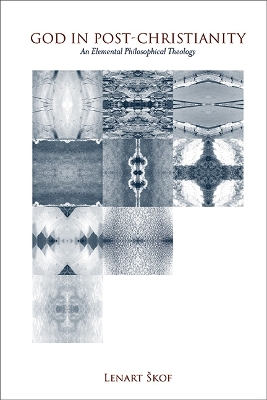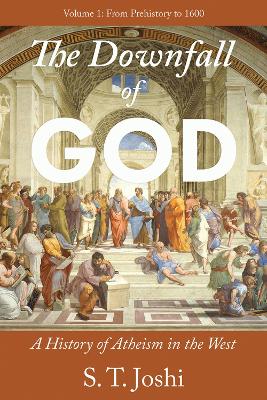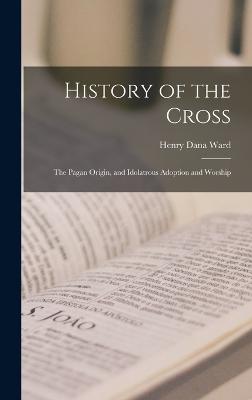Key Concepts in the Study of Religions in Contact
 portes grátis
portes grátis
Key Concepts in the Study of Religions in Contact
Stuenkel, Knut Martin
Brill
12/2024
544
Dura
9789004516267
Pré-lançamento - envio 15 a 20 dias após a sua edição
Descrição não disponível.
Series Editor's Foreword
Acknowledgments
Introduction
On Concepts and Contact
The Andy-Warhol-Syndrome (AWS) in Postcolonial Religious Studies
On Language
On Method
1. Attraction: Aura as Propensity. Towards a Non-Intentionalistic Description of Attraction in Religious Studies or: Why Religion Sucks
1.1. Introduction: Against the Intentionalistic Stance
1.2. Towards a Non-Intentionalistic Description of Attraction
1.3. The Process of Attraction
1.4. Conclusion: Attraction Revisited
2. Dynamics and Stability: Potentiality, Bipolarity, Metastability. Some Theoretical Perspectives on the Conceptualization of Dynamics and Stability in the Study of Religion
2.1. Introduction: Dynamics and the Dynamic Scholar
2.2. 'Dynamics' in the Study of Religion
2.3. Towards a General Notion of Dynamics
2.4. Aspects of Dynamics
2.5. Six Forms (modi) of the Dynamics-Stability Relation
2.6. Metastability: A General Notion of the Dynamics/Stability-Relationship
2.7. Conclusion: Bipolar Metastability in Contact
3. Tradition. Tradition, Recursivity, and not Identity
3.1. Tradition's Recursivity
3.2. Tradition and Identity
3.3. Conclusion: Toward Self-Referential Tradition
4. The Transcendence/Immanence Distinction. Religion as Contrast
4.1. Introduction
4.2. Transcendence/Immanence in Comparison
4.3. The Basic Structure of the Transcendence/Immanence Distinction
4.4. Metaphors of Transcendence
4.5. The Three-Level Model of Transcendence
4.6. The Process of Transcending: Cases from Ancient China, the New World, and Medieval/Early Modern Europe
4.7. Transcending and Semiosis
4.8. TID and Contrast
4.9. Conclusion: Transcending, Contrast, and the Dynamics of Contact
5. Making Sense of the Senses. Communicativeness, Reciprocity, Immediacy, and Scriptuality in Sensory Religious Experience
5.1. On the Possible Role of the Study of the Senses in Religious Studies
5.2. Object Language Examples of Ascribing Sense to the Senses
5.3. Conclusion: The Dynamics of Sense-Making
6. Secrets: Formally Indicating Blank Spaces in Situations of Religious Contact
6.1. Secrets in the Study of Religion
6.2. Secrets and Contact
6.3. Secrets as Blank Spaces
6.4. The Blank Spaces of Secrets in Contact: Translation Processes
6.5. Conclusion: Secrets and Formal Indication of Concepts
7. Sleep: "Haec est somni et ratio naturalis et natura rationalis". Tertullian on Sleep as a Promotor of Contact
7.1. Tertullian and the Question of Religious Contact
7.2. Contact and Language
7.3. On Sleep as an Interface of Religion
7.4. On Sleep and Contact in Tertullian's De Anima
Prospect: Contacting the Future
Typology of Contact
Evolutional Semiosis and Relationality
Explorative Conceptualizing
Bibliography
Acknowledgments
Introduction
On Concepts and Contact
The Andy-Warhol-Syndrome (AWS) in Postcolonial Religious Studies
On Language
On Method
1. Attraction: Aura as Propensity. Towards a Non-Intentionalistic Description of Attraction in Religious Studies or: Why Religion Sucks
1.1. Introduction: Against the Intentionalistic Stance
1.2. Towards a Non-Intentionalistic Description of Attraction
1.3. The Process of Attraction
1.4. Conclusion: Attraction Revisited
2. Dynamics and Stability: Potentiality, Bipolarity, Metastability. Some Theoretical Perspectives on the Conceptualization of Dynamics and Stability in the Study of Religion
2.1. Introduction: Dynamics and the Dynamic Scholar
2.2. 'Dynamics' in the Study of Religion
2.3. Towards a General Notion of Dynamics
2.4. Aspects of Dynamics
2.5. Six Forms (modi) of the Dynamics-Stability Relation
2.6. Metastability: A General Notion of the Dynamics/Stability-Relationship
2.7. Conclusion: Bipolar Metastability in Contact
3. Tradition. Tradition, Recursivity, and not Identity
3.1. Tradition's Recursivity
3.2. Tradition and Identity
3.3. Conclusion: Toward Self-Referential Tradition
4. The Transcendence/Immanence Distinction. Religion as Contrast
4.1. Introduction
4.2. Transcendence/Immanence in Comparison
4.3. The Basic Structure of the Transcendence/Immanence Distinction
4.4. Metaphors of Transcendence
4.5. The Three-Level Model of Transcendence
4.6. The Process of Transcending: Cases from Ancient China, the New World, and Medieval/Early Modern Europe
4.7. Transcending and Semiosis
4.8. TID and Contrast
4.9. Conclusion: Transcending, Contrast, and the Dynamics of Contact
5. Making Sense of the Senses. Communicativeness, Reciprocity, Immediacy, and Scriptuality in Sensory Religious Experience
5.1. On the Possible Role of the Study of the Senses in Religious Studies
5.2. Object Language Examples of Ascribing Sense to the Senses
5.3. Conclusion: The Dynamics of Sense-Making
6. Secrets: Formally Indicating Blank Spaces in Situations of Religious Contact
6.1. Secrets in the Study of Religion
6.2. Secrets and Contact
6.3. Secrets as Blank Spaces
6.4. The Blank Spaces of Secrets in Contact: Translation Processes
6.5. Conclusion: Secrets and Formal Indication of Concepts
7. Sleep: "Haec est somni et ratio naturalis et natura rationalis". Tertullian on Sleep as a Promotor of Contact
7.1. Tertullian and the Question of Religious Contact
7.2. Contact and Language
7.3. On Sleep as an Interface of Religion
7.4. On Sleep and Contact in Tertullian's De Anima
Prospect: Contacting the Future
Typology of Contact
Evolutional Semiosis and Relationality
Explorative Conceptualizing
Bibliography
Este título pertence ao(s) assunto(s) indicados(s). Para ver outros títulos clique no assunto desejado.
Series Editor's Foreword
Acknowledgments
Introduction
On Concepts and Contact
The Andy-Warhol-Syndrome (AWS) in Postcolonial Religious Studies
On Language
On Method
1. Attraction: Aura as Propensity. Towards a Non-Intentionalistic Description of Attraction in Religious Studies or: Why Religion Sucks
1.1. Introduction: Against the Intentionalistic Stance
1.2. Towards a Non-Intentionalistic Description of Attraction
1.3. The Process of Attraction
1.4. Conclusion: Attraction Revisited
2. Dynamics and Stability: Potentiality, Bipolarity, Metastability. Some Theoretical Perspectives on the Conceptualization of Dynamics and Stability in the Study of Religion
2.1. Introduction: Dynamics and the Dynamic Scholar
2.2. 'Dynamics' in the Study of Religion
2.3. Towards a General Notion of Dynamics
2.4. Aspects of Dynamics
2.5. Six Forms (modi) of the Dynamics-Stability Relation
2.6. Metastability: A General Notion of the Dynamics/Stability-Relationship
2.7. Conclusion: Bipolar Metastability in Contact
3. Tradition. Tradition, Recursivity, and not Identity
3.1. Tradition's Recursivity
3.2. Tradition and Identity
3.3. Conclusion: Toward Self-Referential Tradition
4. The Transcendence/Immanence Distinction. Religion as Contrast
4.1. Introduction
4.2. Transcendence/Immanence in Comparison
4.3. The Basic Structure of the Transcendence/Immanence Distinction
4.4. Metaphors of Transcendence
4.5. The Three-Level Model of Transcendence
4.6. The Process of Transcending: Cases from Ancient China, the New World, and Medieval/Early Modern Europe
4.7. Transcending and Semiosis
4.8. TID and Contrast
4.9. Conclusion: Transcending, Contrast, and the Dynamics of Contact
5. Making Sense of the Senses. Communicativeness, Reciprocity, Immediacy, and Scriptuality in Sensory Religious Experience
5.1. On the Possible Role of the Study of the Senses in Religious Studies
5.2. Object Language Examples of Ascribing Sense to the Senses
5.3. Conclusion: The Dynamics of Sense-Making
6. Secrets: Formally Indicating Blank Spaces in Situations of Religious Contact
6.1. Secrets in the Study of Religion
6.2. Secrets and Contact
6.3. Secrets as Blank Spaces
6.4. The Blank Spaces of Secrets in Contact: Translation Processes
6.5. Conclusion: Secrets and Formal Indication of Concepts
7. Sleep: "Haec est somni et ratio naturalis et natura rationalis". Tertullian on Sleep as a Promotor of Contact
7.1. Tertullian and the Question of Religious Contact
7.2. Contact and Language
7.3. On Sleep as an Interface of Religion
7.4. On Sleep and Contact in Tertullian's De Anima
Prospect: Contacting the Future
Typology of Contact
Evolutional Semiosis and Relationality
Explorative Conceptualizing
Bibliography
Acknowledgments
Introduction
On Concepts and Contact
The Andy-Warhol-Syndrome (AWS) in Postcolonial Religious Studies
On Language
On Method
1. Attraction: Aura as Propensity. Towards a Non-Intentionalistic Description of Attraction in Religious Studies or: Why Religion Sucks
1.1. Introduction: Against the Intentionalistic Stance
1.2. Towards a Non-Intentionalistic Description of Attraction
1.3. The Process of Attraction
1.4. Conclusion: Attraction Revisited
2. Dynamics and Stability: Potentiality, Bipolarity, Metastability. Some Theoretical Perspectives on the Conceptualization of Dynamics and Stability in the Study of Religion
2.1. Introduction: Dynamics and the Dynamic Scholar
2.2. 'Dynamics' in the Study of Religion
2.3. Towards a General Notion of Dynamics
2.4. Aspects of Dynamics
2.5. Six Forms (modi) of the Dynamics-Stability Relation
2.6. Metastability: A General Notion of the Dynamics/Stability-Relationship
2.7. Conclusion: Bipolar Metastability in Contact
3. Tradition. Tradition, Recursivity, and not Identity
3.1. Tradition's Recursivity
3.2. Tradition and Identity
3.3. Conclusion: Toward Self-Referential Tradition
4. The Transcendence/Immanence Distinction. Religion as Contrast
4.1. Introduction
4.2. Transcendence/Immanence in Comparison
4.3. The Basic Structure of the Transcendence/Immanence Distinction
4.4. Metaphors of Transcendence
4.5. The Three-Level Model of Transcendence
4.6. The Process of Transcending: Cases from Ancient China, the New World, and Medieval/Early Modern Europe
4.7. Transcending and Semiosis
4.8. TID and Contrast
4.9. Conclusion: Transcending, Contrast, and the Dynamics of Contact
5. Making Sense of the Senses. Communicativeness, Reciprocity, Immediacy, and Scriptuality in Sensory Religious Experience
5.1. On the Possible Role of the Study of the Senses in Religious Studies
5.2. Object Language Examples of Ascribing Sense to the Senses
5.3. Conclusion: The Dynamics of Sense-Making
6. Secrets: Formally Indicating Blank Spaces in Situations of Religious Contact
6.1. Secrets in the Study of Religion
6.2. Secrets and Contact
6.3. Secrets as Blank Spaces
6.4. The Blank Spaces of Secrets in Contact: Translation Processes
6.5. Conclusion: Secrets and Formal Indication of Concepts
7. Sleep: "Haec est somni et ratio naturalis et natura rationalis". Tertullian on Sleep as a Promotor of Contact
7.1. Tertullian and the Question of Religious Contact
7.2. Contact and Language
7.3. On Sleep as an Interface of Religion
7.4. On Sleep and Contact in Tertullian's De Anima
Prospect: Contacting the Future
Typology of Contact
Evolutional Semiosis and Relationality
Explorative Conceptualizing
Bibliography
Este título pertence ao(s) assunto(s) indicados(s). Para ver outros títulos clique no assunto desejado.







